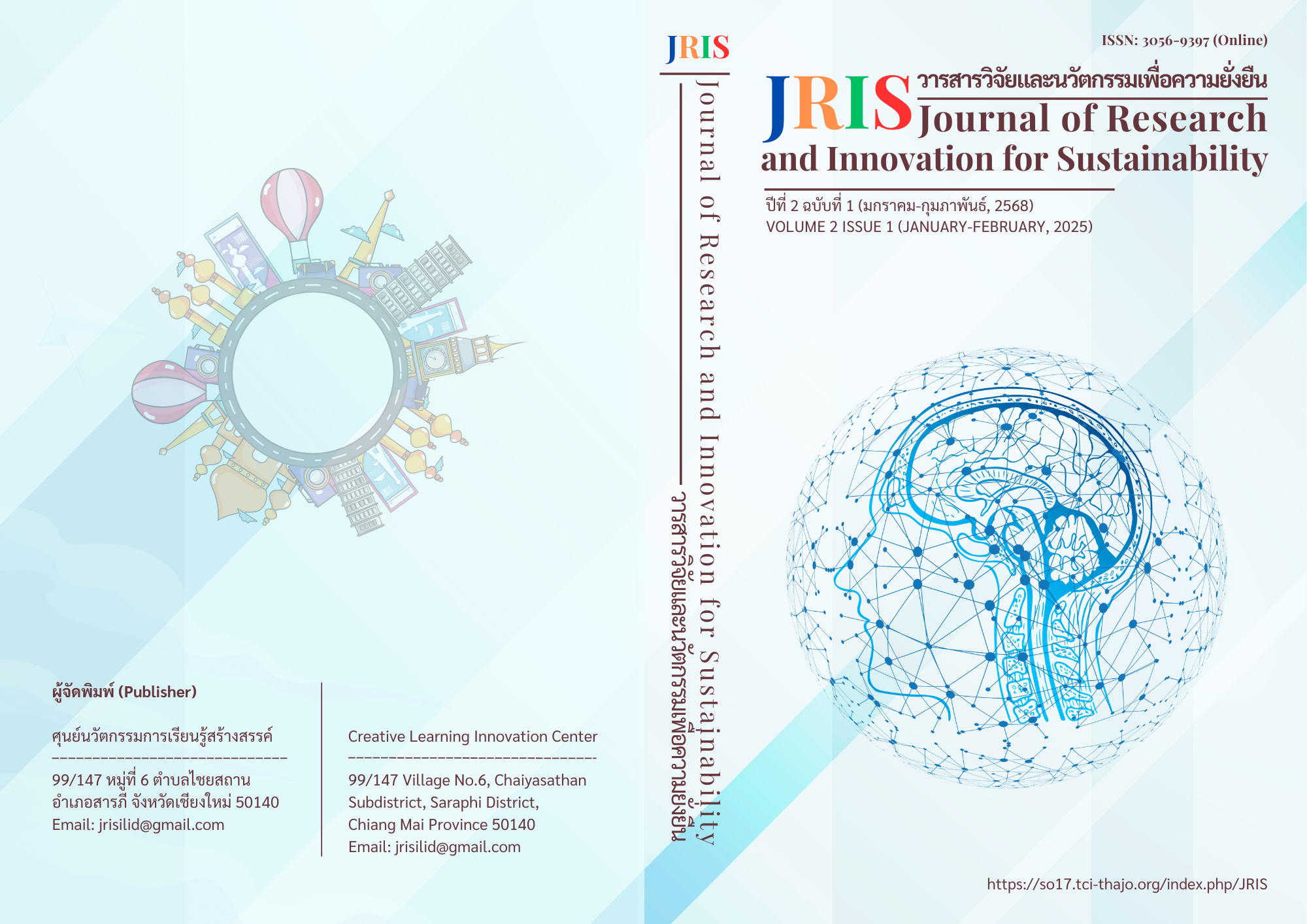PHYSICAL ACTIVITY AND SEDENTARY BEHAVIOR OF UNDERGRADUATE STUDENTS CHAIYAPHUM RAJABHAT UNIVERSITY
Main Article Content
Abstract
The research on physical activity and sedentary behavior of undergraduate students at Chaiyaphum Rajabhat University aimed to study the physical activity and sedentary behavior of undergraduate students at Chaiyaphum Rajabhat University. The sample group consisted of 267 first-year undergraduate students from the Faculty of Education and Human Development and the Faculty of Liberal Arts and Sciences, Chaiyaphum Rajabhat University. The sample was purposively selected. The instrument used for data collection was a questionnaire developed by the researcher and adapted from the Global Physical Activity Questionnaire (GPAQ). Descriptive statistics were used for data analysis, including percentage, mean, and standard deviation, which can be summarized as follows: Students had low physical activity behavior during travel with an average of (M =66.75, SD=37.5), had low physical activity behavior during travel with an average of (M =66.75, SD=46.6), and had low physical activity behavior during recreation with an average of (M=63.75, SD=44.47). This is because most learning environments involve sitting, working in front of a computer for hours, and even commuting from your accommodation to your university. Or most of the time, going out to eat is done by personal motorcycle because there are many areas that are far apart, causing students to have less physical movement, resulting in insufficient physical activities.
Article Details

This work is licensed under a Creative Commons Attribution-NonCommercial-NoDerivatives 4.0 International License.
Copyright License
Permission is granted to use text, content, images, or any other material from the publication for anyone who wishes to read, download, copy, distribute, print, search, or link to the full text of the article, compile data for indexing, transfer data to software, or use for any other legal purposes, provided that it is not used for commercial purposes or for business benefit. All articles published in the Journal of Research and Innovation for Sustainability are distributed under a Creative Commons Attribution-NonCommercial-NoDerivatives 4.0 International License: https://creativecommons.org/licenses/by-nc-nd/4.0/
References
Ainsworth, B. E., Haskell W. L., Whitt, M, C., Irwin, M. L., Swartz, A. M., Strath, S. J., O’Brien W. L., Bassett, D. R., Schmitz, K. H., Emplaincourt, P. O., Jacobs, D. R., & Leon, A. S. (2000). Compendium of physical activities: an update of activity codes and MET intensities. Medicine and Science in Sports & Medicine. 32(9), S498–S504. https://doi.org/10.1097/00005768-200009001-00009
Bouchard, C., Blair, S.N., & Haskell, W.L. (2012). Why Study Physical Activity and Health?. In C. Bouchard, S.N. Blair & W.L. Haskell (Ed.). Physical activity and health (pp. 3–20). Human Kinetics. http://dx.doi.org/10.5040/9781492595717.ch-001
World Health Organization. (2010). Global recommendations on physical activity for health. https://www.who.int/dietphysicalactivity/global-PA-recs-2010.pdf
กรมอนามัย. (2562). แผนส่งเสริมกิจกรรมทางกาย พ.ศ. 2561-2573. กรุงเทพมหานคร
ช่อนภา สิทธิ์ธัง. (2563). การสำรวจกิจกรรมทางกายและพฤติกรรมเนือยนิ่งของบุคลากรสายสนับสนุนในจุฬาลงกรณ์ มหาวิทยาลัย. [วิทยานิพนธ์มหาบัณฑิต]. จุฬาลงกรณ์มหาวิทยาลัย.
ณัฐพงษ์ อัญชลี, และเบญจา มุกตพันธุ์. (2563). วิถีชีวิตและปัจจัยส่วนบุคคลที่สัมพันธ์กับภาวะโภชนาการเกินของบุคลากรสายสนับสนุนมหาวิทยาลัยขอนแก่น. ศรีนครินทร์เวชสาร, 35(1). 89-97.
ดิตถพงษ์ บุญอำพล. (2565). เล่นมือถือ ติดโซเชียลมากไป เสี่ยงอาการ Text Neck Syndrome. https://shorturl.asia/Su9Mk
ปิ่นทอง พิริยธาดาวงศ์, พรเทพ ราชรุจิทอง และนาทรพี ผลใหญ่. (2564). กิจกรรมทางกายของนิสิตระดับปริญญาตรี ชั้นปีที่ 1 มหาวิทยาลัยเกษตรศาสตร์ วิทยาเขตบางเขน. วารสารนาคบุตรปริทรรศน์ มหาวิทยาลัยราชภัฏนครศรีธรรมราช, 13(3). 172-181.
ปิยธดา ต. ไชยสุวรรณ, วัฒนารี อัมมวรรธน์, ปิยะ ทองบาง, นิรุติ ผึ่งผล, ชนิตา รุ่งเรือง, และพูลพงศ์ สุขสว่าง. (2560). ผลของความถี่การทำกิจกรรมทางกายต่อความสามารถการบริหารจัดการขั้นสูงในวัยรุ่น. วารสารศิลปศาสตร์ มหาวิทยาลัยสงขลานครินทร์ วิทยาเขตหาดใหญ่, 9(2). 301-326.
พิเชษฐ์ เกิดวิชัย, สรายุทธ มหวลีรัตน์, โชคชัย เอี่ยมฤทธิไกร, ธนพล จึงศิรกุลวิทย์, และสุจินตนา บุญทวี. (2565). วารสารวิชาการสถาบันวิทยากการจัดการแห่งแปซิฟิค สาขามนุษยศาสตร์และสังคมศาสตร์, 8(2). 263-272.
สำนักงานกองทุนสนับสนุนการสร้างเสริมสุขภาพ. (2565). กิจกรรมทางกายคืออะไร. https://shorturl.asia/CKYwZ

